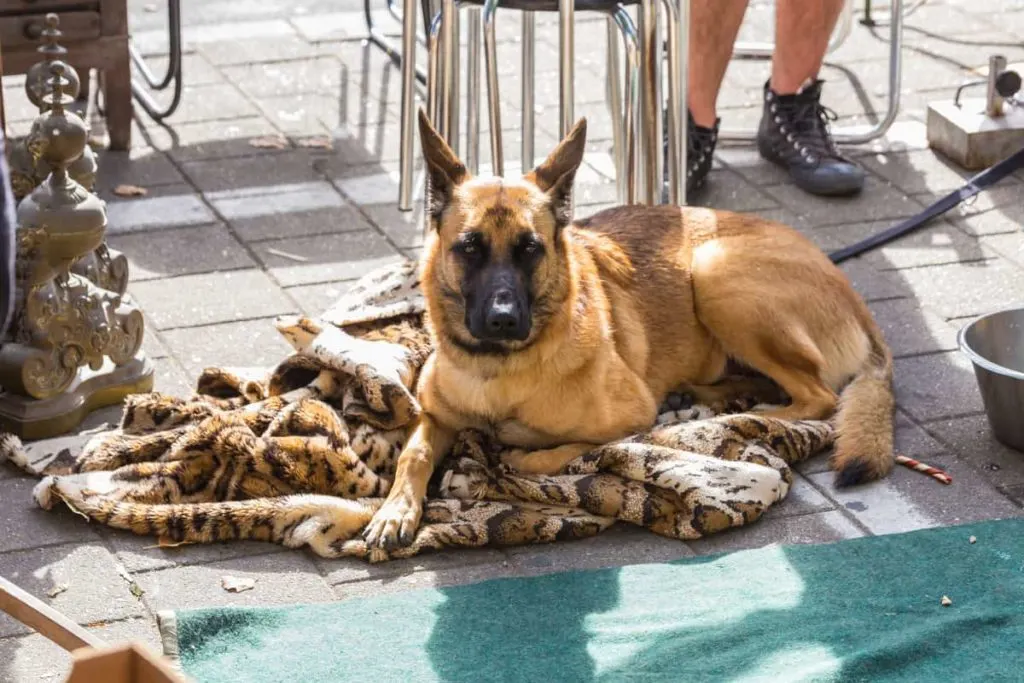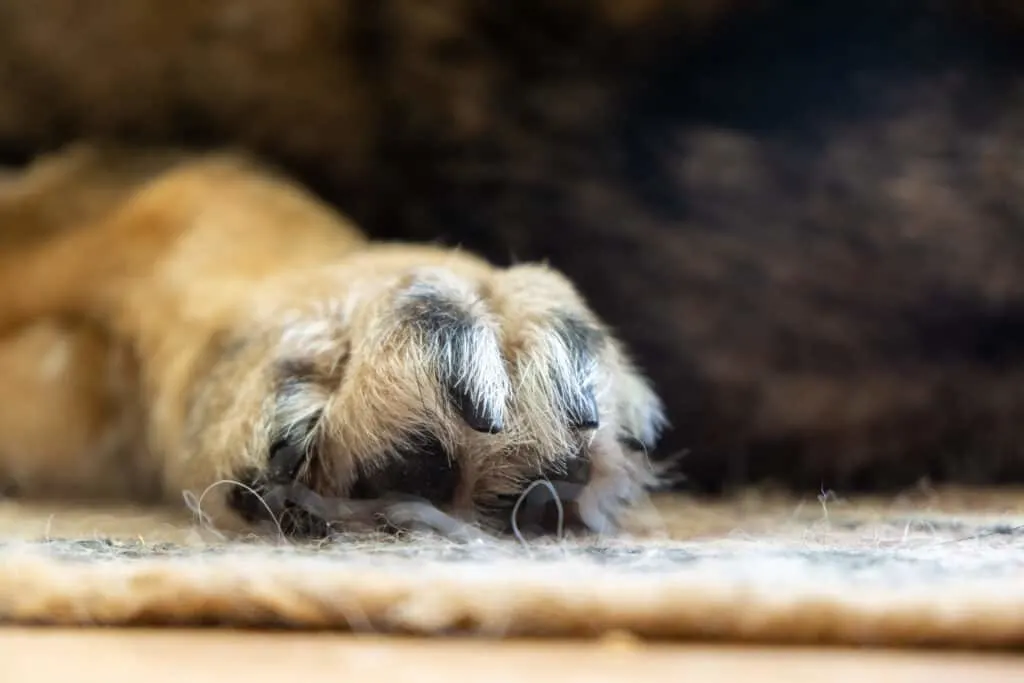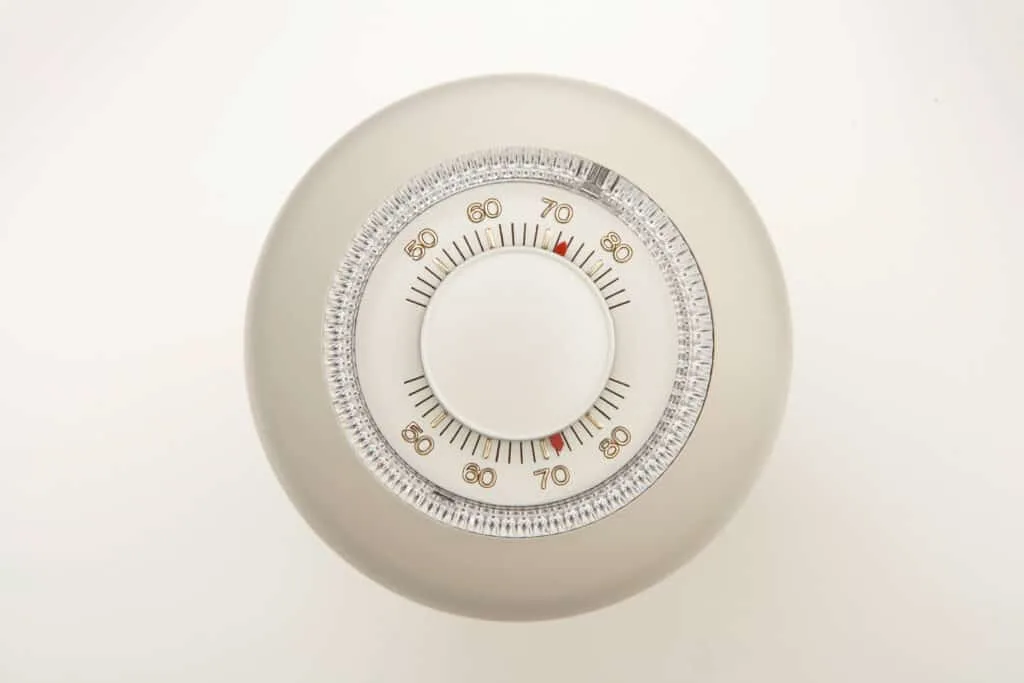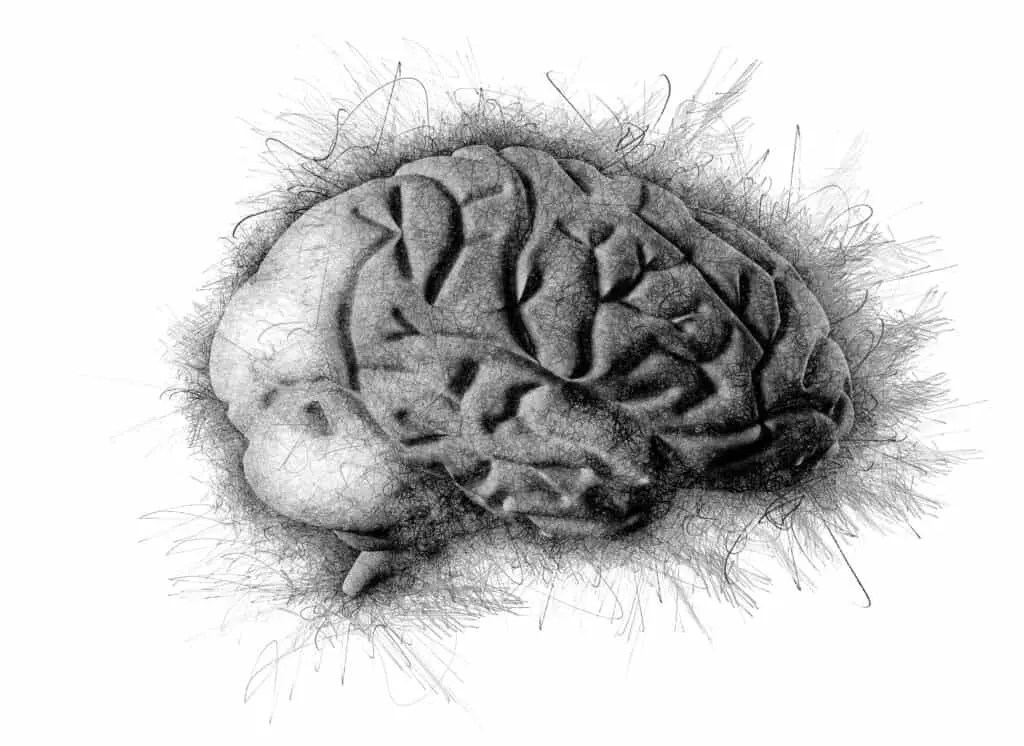
Many of us have witnessed the following behavior – a dog is getting ready to lay down for a nice slumber, but before he settles in, he takes the time to methodically spin around in circles several times before finally lying down. It seems as though he is preparing for something. But what exactly is he preparing for?
Why do dogs turn in circles before lying down?
Dogs turn in circles before lying down as an evolutionary behavior passed down from wolves. It serves to mark territory and also to best position a dog to defend itself against potential threats. However, in some cases, circling may be a symptom of an underlying health condition.
Click Here to Jump to a Section
Circling as a Defense
As we just mentioned, a dog circling before he lies down is an inherited behavior which has been passed down for many generations. It is a somewhat ancient behavior that predated most modern dogs’ living arrangements in a safe and sheltered home.
Back when sleeping indoors on a cozy bed was not an option for our canine friends, self-preservation was at the very pinnacle of a dog’s needs. Similar to a person who feels most comfortable in a corner so that they can view an entire room, when a dog is circling before lying down, it is simply assessing its surroundings and making sure that he will be facing towards any potential threat that may approach him while he is sleeping.
It has been theorized by animal behavior experts that wolves actually sleep with their noses facing into the wind in order to give them an opportunity to catch the scent of any threat at the earliest chance possible.
It is likely that this behavior, even though the modern dog has little use for it, is so engrained in today’s dog’s DNA that they just perform this behavior with no conscious awareness of why they are doing it.
Circling as a Denning Behavior
Another basic reason why dogs tend to circle before they lie down is simply because of comfort. Just like you prepare your bed before you slumber, making sure that the blankets and pillows are arranged just so, a dog also seeks comfort for the same reason.
In nature, in times past and even present day, dogs did not have the luxury of a cozy bed with their name embroidered on the side! Instead, they had to find and prepare their own sleeping quarters. This involves clearing their sleeping area of any rocks, sticks, or other undesirable objects.
If you watch closely, you will most often see a dog using its paws to claw at and scratch its bed as it’s circling, even though there may be nothing there to clear away. This is again part of a dog’s instinctual behavior, and it has no conscious idea of why it is performing this behavior.
Additionally, circling and clearing the sleeping area before lying down functions as a marking of territory. Dogs are territorial by nature, and they do not like to share what they view as their own. Leaving a physical reminder of its presence, such as patted down grass and a cleared sleeping area, functions as a signal to other dogs that “this spot is taken.”

In addition, when a dog scratches the ground while circling its claws are filled with scent from glands located in their paw pads, thus further signaling to other dogs that the circled territory belongs to him and him alone.
In her book “If You Tame Me: Understanding Our Connection With Animals,” animal behavior author Leslie Irvine aptly states, “I have also heard that circling the area and thus flattening it leaves a visible sign to other dogs that this territory has been claimed…even though our dogs now sleep on cushions, the behavior endures.”
Circling as Temperature Control
While many of today’s dogs have it relatively easy, this was not always the case. The contemporary dog is likely to sleep in a house with a thermostat that keeps the temperature just right, and a bed that is oh so cozy. However, in times past, dogs were not afforded these modern luxuries.

Even today, outdoor dogs will circle before they lie down in order to make sure that the surface upon which they are sleeping is temperature controlled to the greatest extent possible.
For example, if it is hot outside, a dog will scratch the ground while circling in order to clear away at the grass and soil directly beneath him that has been gathering the sun’s heat. A dog instinctively knows that the ground is much cooler just below the surface.
On the other hand, if the weather outside is very cold, a dog will use a circling behavior to wind itself up into a tight ball. Just like a person will grasp at their sides in an effort to stay warm, a dog will also compact its body to the greatest extent possible to retain heat. Circling gives a dog an opportunity to tuck itself tightly into a ball and thus stay much warmer as it slumbers.
When to Be Concerned About Circling
As we have discussed, circling is a perfectly natural and instinctive behavior for dogs that has been passed down for many generations. However, there are times when this behavior may not simply be in accordance with instinct, and circling may actually be indicative of something that warrants concern.
Physical Health Issues
If a dog begins circling as a new behavior, especially as an older dog, then it is important that you pay very close attention. The reason for a new circling behavior in an older dog is often a sign of discomfort.
An old dog displaying a new circling behavior can be linked to sore joints, back pain, or pain in its abdomen. If these are actually the underlying reasons for a dog’s circling, the behavior will often also be accompanied by getting immediately back up after laying down, as the dog is unable to find a position to sleep in which does not cause him a strong level of discomfort.
Neurological Disorders
Another instance when a dog’s circling may indicate something more than instinct is if the circling is compulsive, especially if a dog’s circling is displayed outside of the times that it is simply preparing to lie down.

If a dog is displaying compulsive, abnormal circling behaviors which are not confined only to the time period just before lying down, this may be a sign of a neurological disorder. If a neurological disorder is present, this abnormal circling may also be accompanied by a loss of balance.
If you notice your dog displaying this type of behavior, then it is time to reach out to your veterinarian for further guidance. Neurological disorders sometimes progress quickly, but if caught in the early stages, medical intervention may be an option. So it is important that you do not delay in contacting your veterinarian should you notice your dog displaying this type of circling behavior.
Vestibular Syndrome
Vestibular Syndrome (VS) primarily affects a dog’s balance, as it impacts a dog’s spacial awareness. In other words, a dog with VS will not be able to ascertain where its body is within a given space. This condition has the ability to affect either the peripheral or central nervous system in a dog, effecting either the inner ear or the brain and spinal cord.
Signs of Vestibular Syndrome in a dog include:
- Circling
- Tilting of the head
- Stumbling while walking
- Vomiting
- Abnormal yet rhythmic movements of they eye; either up and down or back and forth
- Abnormal and excessive drooling
If your dog is displaying any of the foregoing symptoms, it is, again, very important to reach out to your veterinarian as soon as possible. While VS is treatable and often resolves on its own, it can be an extremely traumatic for a dog if left untreated.
Final Thoughts
While the reasons that dogs circle before lying down nowadays most likely fall under the category of “fun facts,” it is important to carefully observe your dog’s genetically predisposed circling behavior. As we have discussed in this article, a dog circling before it lies down is a naturally occurring behavior, but it can also be an indication of a health issue that warrants veterinary attention.
Keep this in mind, and if you do observe your dog circling in an inconsistent or abnormal manner, it is important that you contact your veterinarian and take your dog in for a professional opinion. Even though chances are slim that your dog’s circling is anything more than a behavior that comes natural to him, please do not take any abnormalities within this behavior lightly. Your dog will thank you!
